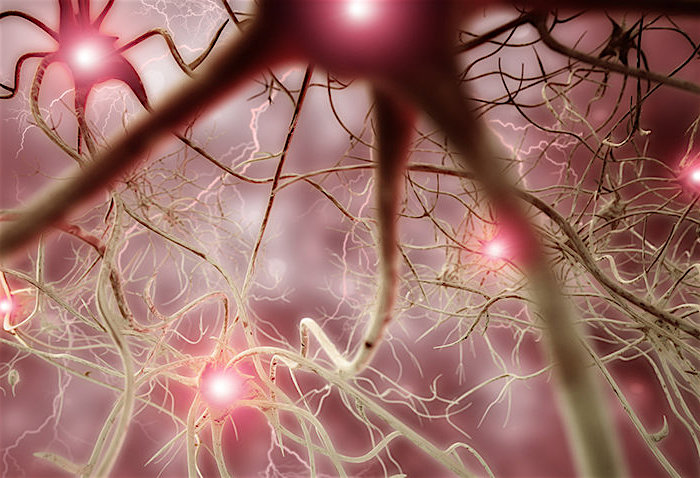 A new study finds that patients with fibromyalgia have brain networks primed for rapid, global responses to minor changes. This abnormal hypersensitivity, called explosive synchronization (ES), can be seen in other network phenomena across nature.
A new study finds that patients with fibromyalgia have brain networks primed for rapid, global responses to minor changes. This abnormal hypersensitivity, called explosive synchronization (ES), can be seen in other network phenomena across nature.
Researchers from the University of Michigan and Pohang University of Science and Technology in South Korea report evidence of ES in the brains of people with fibromyalgia, a condition characterized by widespread, chronic pain. The paper, published in Scientific Reports, details only the second study of ES in human brain data.
“For the first time, this research shows that the hypersensitivity experienced by chronic pain patients may result from hypersensitive brain networks.”
“The subjects had conditions similar to other networks that undergo explosive synchronization,” says co-senior author Richard Harris, Ph.D., associate professor of anesthesiology at Michigan Medicine with the Chronic Pain and Fatigue Research Center,
In ES, a small stimulus can lead to a dramatic synchronized reaction in the network, as can happen with a power grid failure (that rapidly turns things off) or a seizure (that rapidly turns things on). This phenomenon was, until recently, studied in physics rather than medicine. Researchers say it’s a promising avenue to explore in the continued quest to determine how a person develops fibromyalgia.
“As opposed to the normal process of gradually linking up different centers in the brain after a stimulus, chronic pain patients have conditions that predispose them to linking up in an abrupt, explosive manner.”
According to first author UnCheol Lee, Ph.D., a physicist and assistant professor of anesthesiology at Michigan Medicine, these conditions are similar to other networks that undergo ES, including power grids.
‘Electrically unstable’ findings
The researchers recorded electrical activity in the brains of 10 female participants with fibromyalgia. Baseline EEG results showed hypersensitive and unstable brain networks, Harris says. Importantly, there was a strong correlation between the degree of ES conditions and the self-reported intensity of chronic pain reported by the patients at the time of EEG testing.
Lee’s research team and collaborators in South Korea then used computer models of brain activity to compare stimulus responses of fibromyalgia patients to the normal condition. As expected, the fibromyalgia model was more sensitive to electrical stimulation than the model without ES characteristics, Harris says.
“We again see the chronic pain brain is electrically unstable and sensitive,” Harris says.
He says this type of modeling could help guide future treatments for fibromyalgia. Since ES can be modeled essentially outside of the brain or in a computer, researchers can exhaustively test for influential regions that transform a hypersensitive network into a more stable one. These regions could then be targeted in living humans using noninvasive brain modulation therapies.
George Mashour, M.D., Ph.D., co-senior author and professor of anesthesiology at Michigan Medicine, says, “This study represents an exciting collaboration of physicists, neuroscientists and anesthesiologists. The network-based approach, which can combine individual patient brain data and computer simulation, heralds the possibility of a personalized approach to chronic pain treatment.”
Source: UnCheol Lee, Minkyung Kim, KyoungEun Lee, Chelsea M. Kaplan, Daniel J. Clauw, Seunghwan Kim, George A. Mashour, Richard E. Harris. Functional Brain Network Mechanism of Hypersensitivity in Chronic Pain. Scientific Reports, 2018; 8 (1) DOI: 10.1038/s41598-017-18657-4











